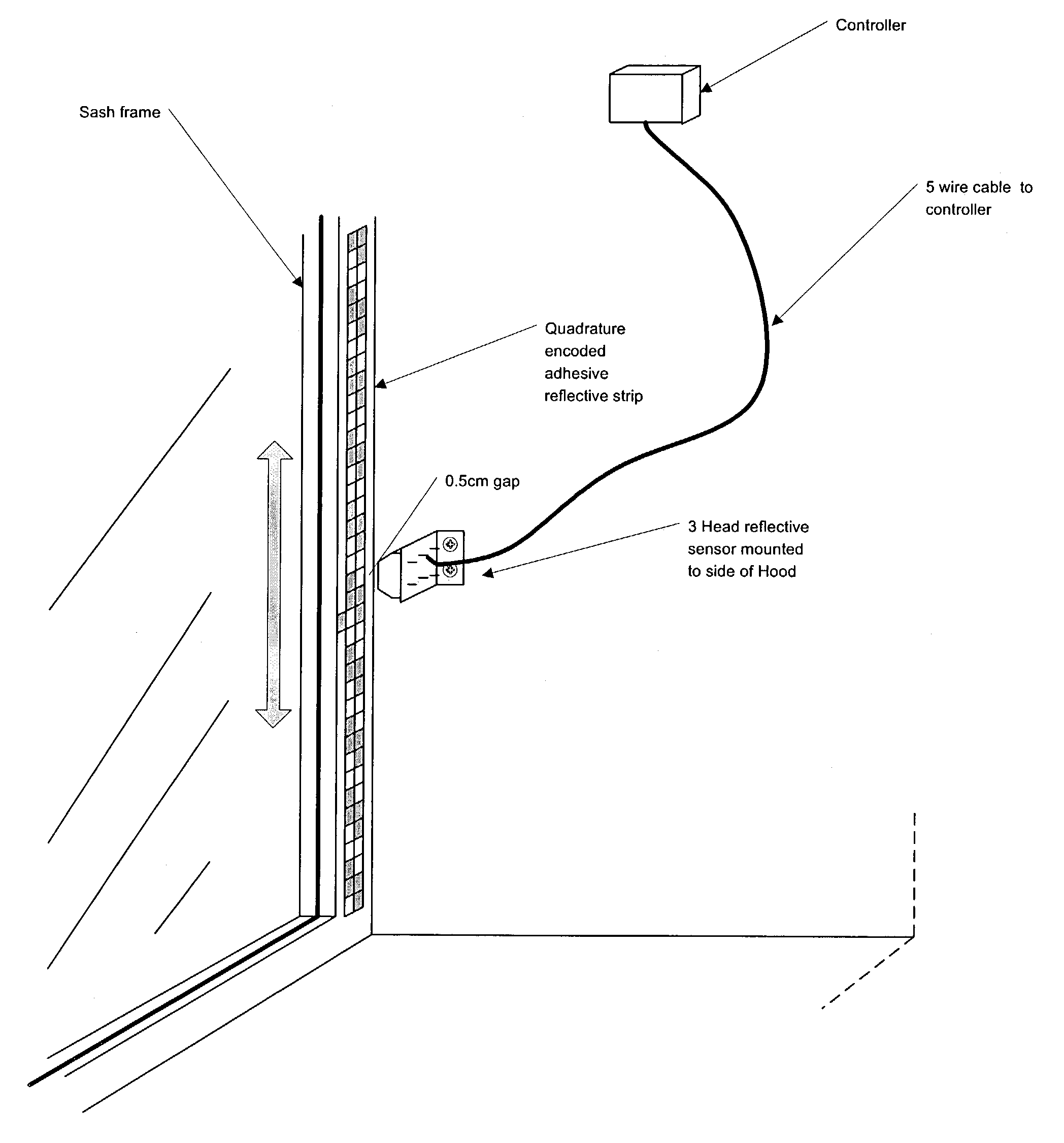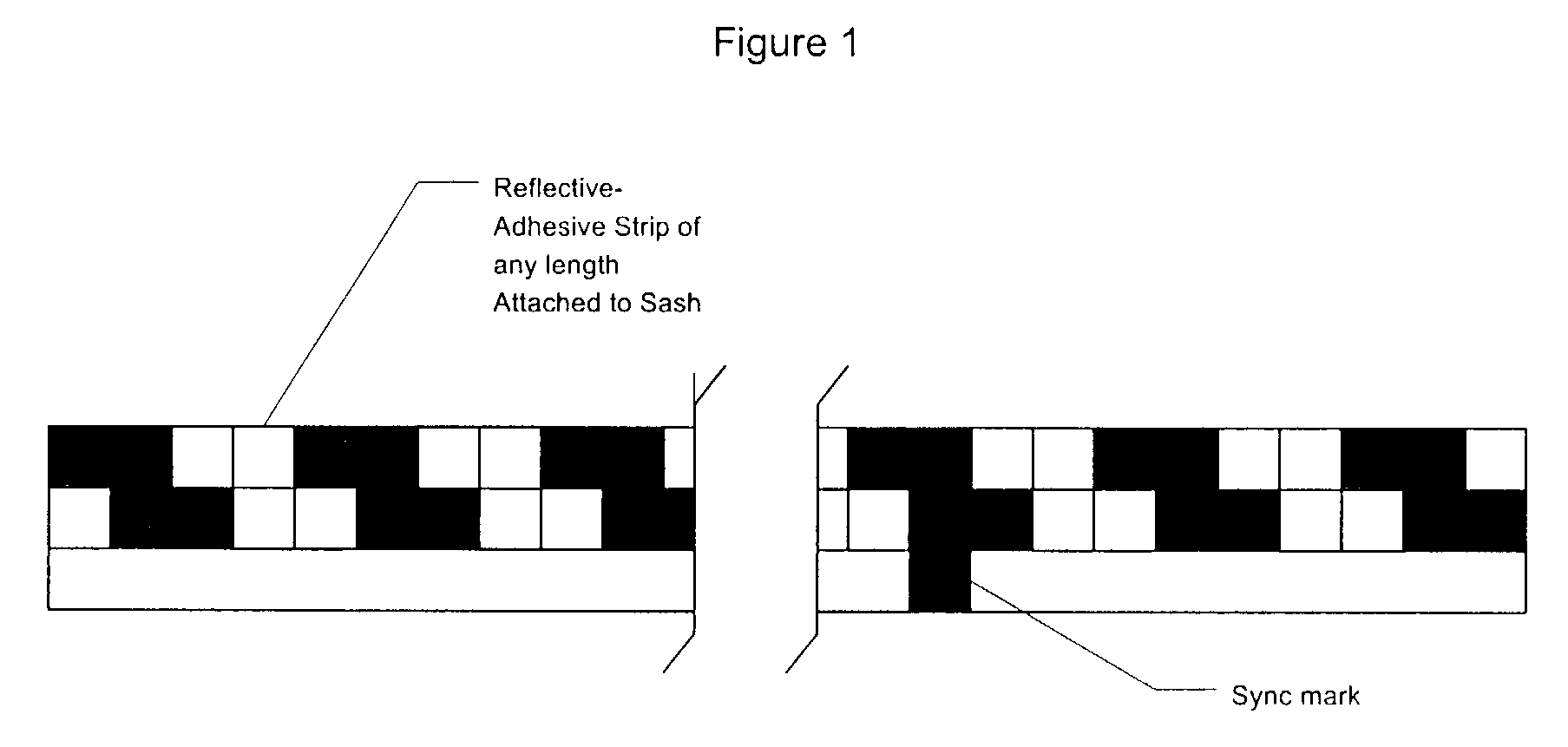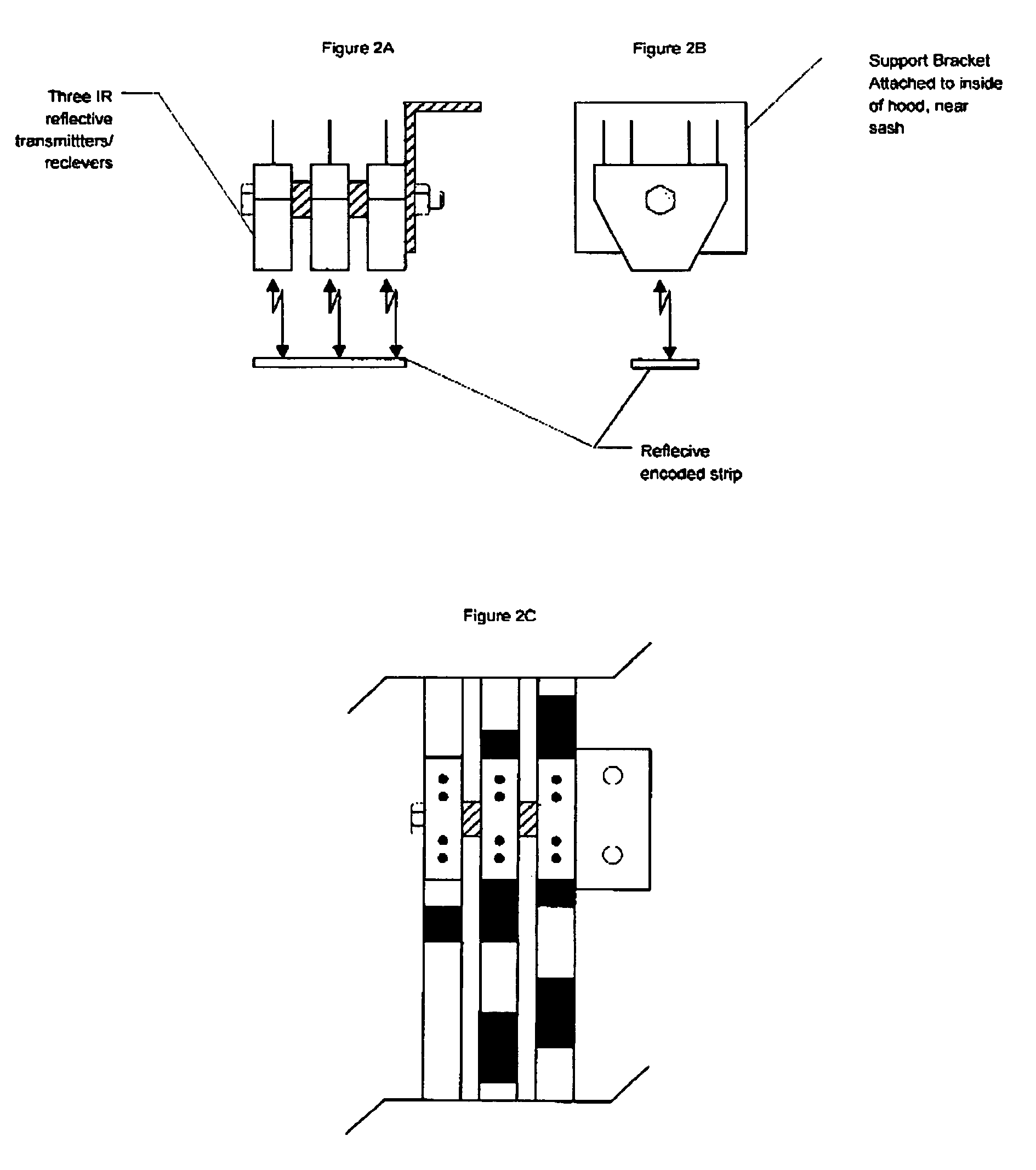Optical sash sensing system for fume hoods
a sensing system and optical sash technology, applied in ventilation systems, heating types, stoves or ranges, etc., can solve the problems of insufficient information about the absolute position of the sash, the danger of contamination, and the debate over what types of sensing
- Summary
- Abstract
- Description
- Claims
- Application Information
AI Technical Summary
Benefits of technology
Problems solved by technology
Method used
Image
Examples
Embodiment Construction
[0017]With reference to FIG. 1 there is shown a condensed reproduction of the typical reflective adhesive tape that is used in this application. The tape is thin in width but has 3 distinct parallel sections or strips to it. On the bottom third of the tape that is depicted horizontally is a white reference strip that runs the length of the sash and is all white except for one black sync mark identified in the drawing which is used as a baseline reference point by the sensing device to count up or down in determining when the sash has moved. The top two-thirds of the tape are the repeated quadrature encoded patterns composed of four offset blocks of black and white that are repeated over the length of the tape. The white (or silver) blocks are reflected back onto the optical sensing device (FIG. 2) which is able to count these quad-blocks with reference to the sync point to determine the absolute value of the sash that has passed it as it is moved up or down to determine airflow adju...
PUM
 Login to View More
Login to View More Abstract
Description
Claims
Application Information
 Login to View More
Login to View More - R&D
- Intellectual Property
- Life Sciences
- Materials
- Tech Scout
- Unparalleled Data Quality
- Higher Quality Content
- 60% Fewer Hallucinations
Browse by: Latest US Patents, China's latest patents, Technical Efficacy Thesaurus, Application Domain, Technology Topic, Popular Technical Reports.
© 2025 PatSnap. All rights reserved.Legal|Privacy policy|Modern Slavery Act Transparency Statement|Sitemap|About US| Contact US: help@patsnap.com



